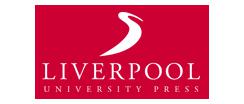- View more resources from this publisher
 Nuffield Foundation
Nuffield Foundation - View more resources from this publisher
 Liverpool University Press
Liverpool University Press
SPACE Project Research Report: Forces
The Science Processes and Concepts Exploration (SPACE) project research report on Forces was published in 1998 by Liverpool University Press. It differs from the other SPACE reports since it concerns research carried out after the original SPACE project has been completed and includes students aged 11 to 14 years in the sample as well as the primary ages (5 to 11 years) involved in earlier SPACE research.
The work on Forces was carried out by researchers at the University of Liverpool and the authors of the report were Terry Russell, Linda McGuigan and Adrian Hughes. The research, which began in November 1996, followed the structure of the previous SPACE research studies.
An initial list of concepts was drawn up in order to define the focus of the research. This took into account the revised National Curriculum of 1995 from which the less advanced ideas about forces were selected. These were ideas about the effects of forces, gravity, friction and air resistance, reaction forces and the effects of more than one force acting on an object. For the first phase of the research the researchers compiled classroom activities for school students (aged 5 to 14 years) related to these ideas.
After two weeks of exposure to these activities students' ideas were elicited using a range of techniques, including individual interviews, by the researchers. Interview samples were of at least six students from each of the 19 classes involved, providing a sample of 118 students in total.
The intervention phase of the research involved teachers providing experiences for students which gave them opportunity to reflect on their ideas, test them out, discuss them and amend, reject or retain them. Intervention was followed by a post-intervention elicitation in which students' ideas were probed in a similar way as in the pre-intervention interviews.
The data analysed included field notes from classroom visits, students' work, video recordings and interview responses. The research report provides a large number of representations of students' ideas, both pre- and post-intervention, through the students' drawing and writing and transcripts of their oral explanations and photographs. Tables giving pre-and post-intervention results for particular ideas and for four age groups (infant, lower Junior, upper junior and lower secondary) are included.
An extensive section of summary and conclusions discusses issues arising across the subject of forces as well as within each of the specific ideas studied. Appendices provide full details of the activities, interview schedules, materials used in the activities and the classroom intervention strategies.
Contents
1 Introduction
2. Methodology
3. Literature review
4. Establishing children’s ideas
5. Intervention
6. Changes in children’s ideas
7. Summary and conclusions drawn
Appendices 1 to 4 (including bibliography)
Show health and safety information
Please be aware that resources have been published on the website in the form that they were originally supplied. This means that procedures reflect general practice and standards applicable at the time resources were produced and cannot be assumed to be acceptable today. Website users are fully responsible for ensuring that any activity, including practical work, which they carry out is in accordance with current regulations related to health and safety and that an appropriate risk assessment has been carried out.
Downloads
-
Forces (part 1) 9.56 MB
-
Forces (part 2) 13.86 MB




